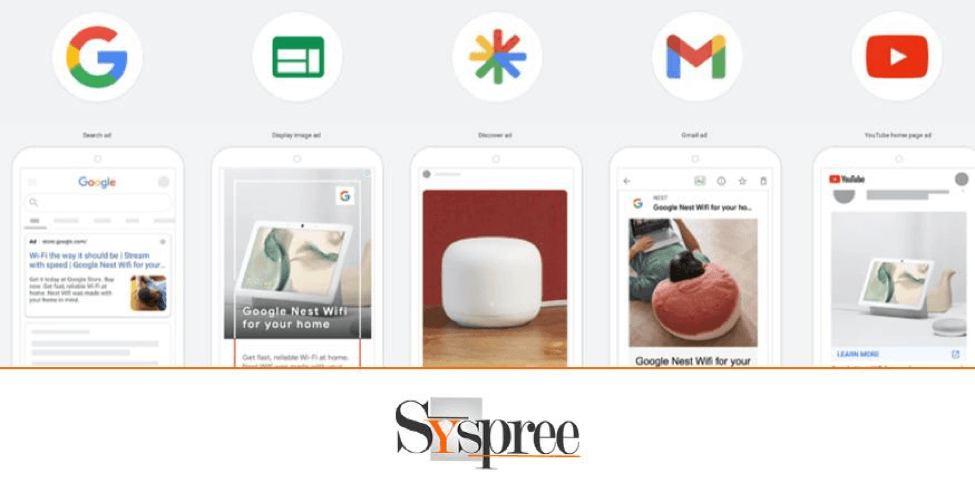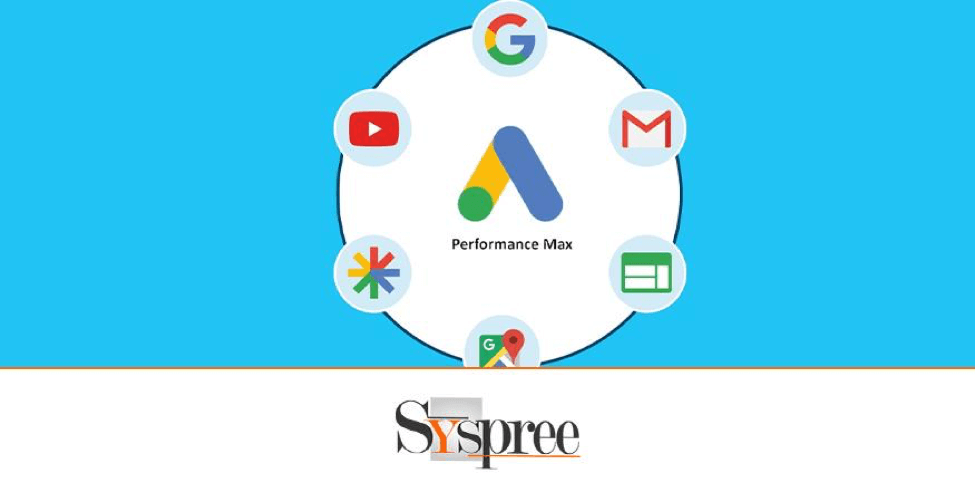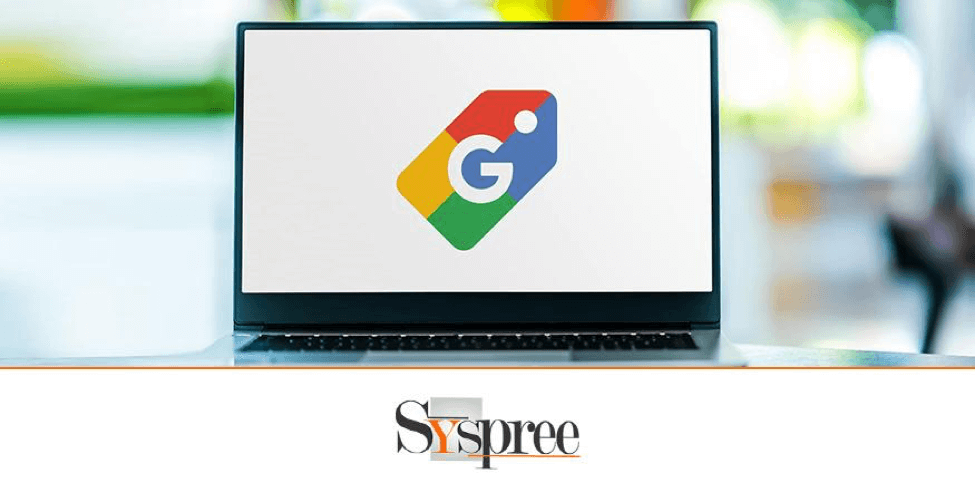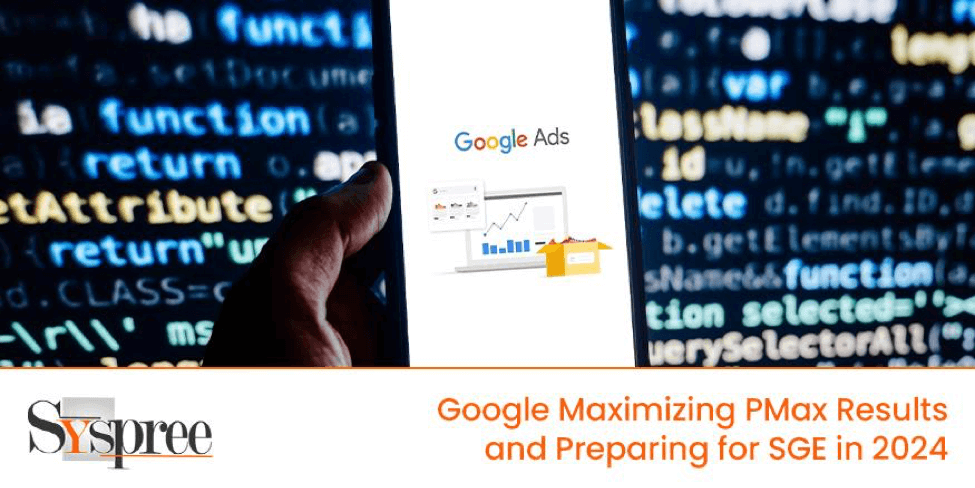By 2024, Google will be at the leading edge of technological advancement, bringing revolutionary advances in artificial intelligence (AI). These advancements are set to change the nature of search marketing through digital channels, with two significant pillars leading the way: Performance Max (PMax) and Search Generative Experience (SGE).
Performance Max, launched officially in July, marks a radical shift in the types of campaigns. This revolutionary approach lets advertisers create ads across Google’s numerous networks, ranging from search to YouTube to Maps. All within the same campaign. The versatility of PMax gives advertisers a wider impact and efficiency in connecting with their targeted audience.
Overview of Google’s AI advancements in 2024
In addition to PMax is the addition of the Search Generative Experience (SGE) concept, which is an AI-generated answer to queries. SGE is positioned above Google’s standard listings; SGE provides users with boxes-in responses, which include images and hyperlinks, as well as a chat mode for questions that follow up. The leading SEO company in Mumbai says as Google explores its experimental phase, SGE marketers and advertisers alike are at the forefront of their minds, anticipating the possible impact on advertising and websites.
Significance of Performance Max (PMax) and Search Generative Experience (SGE)
The importance of the use of PMax and SGE can’t be overstated. PMax simplifies the process of transitioning from manual marketing to automation, providing an effective tool for marketers to boost the effectiveness of their marketing strategies. However, SGE introduces an exciting aspect to user interaction through its AI-generated answers that are expected to change the nature of search engine results.
In the current environment, Susie Vowinkel, Managing Director at Google Travel, provides exclusive information on the potential for advertisers to benefit from these innovative products in 2024 as they unfold. As we dive deeper into the complexities of PMax and SGE it becomes clear that Google’s AI innovations aren’t only technological breakthroughs; they are the pillars of a new age in marketing through digital channels.
Performance as a Revolutionary Campaign Type

PMax – Transitioning from Manual to Automated Marketing
Performance Max (PMax) is an entirely new technological advancement in digital marketing, changing how advertisers communicate with their viewers. Officially launched by Google at the end of July, PMax makes itself known as an exciting campaign type that provides unbeatable range and flexibility across the vast Google network that includes Google Search, YouTube, and Maps in a single campaign.
Transitioning from Manual to Automated Marketing
The shift between manual and automated advertising has become a major discussion in the field, and PMax has become a significant player in this transition. The experts from the leading SEO company in Mumbai say while automation strategies have seen significant progress, Susie Vowinkel, Managing Director at Google Travel, emphasizes a huge opportunity to grow. Industry experts have shared their experiences that confirm PMax’s potential to optimize advertising strategies.
Testimonials from Industry Experts
PMax uses a brand’s assets and provides data to help consumers reach them across multiple platforms using customized messages. In reducing the uncertainty in analyzing seasonal market trends, PMax enables advertisers to engage with their customers more effectively. A case study of international airline Lufthansa showcases the tangible advantages of PMax with the 45% increase in the number of customers acquired, a 59% increase in bookings, and a reduction of 27% in the cost per action.
Despite its obvious advantages however, there are concerns about the degree of control given to AI during PMax campaigns. Susie Vowinkel discusses these concerns, pointing out that PMax was developed to reduce the need for excessive control by allowing AI to learn and adjust to changing consumer behavior efficiently.
Unlocking PMax’s Potential
Exploring the full potential of Google Performance Max (PMax) is essential for marketers seeking the most effective outcomes in the constantly changing world of online marketing. As a novel type of campaign, PMax offers a comprehensive solution to run ads across Google’s many platforms, including search, YouTube, and Maps, in one unified campaign.
Leveraging PMax for Optimal Results
To utilize PMax to achieve the best results, advertisers are urged to adopt automation and shift from manual processes. Susie Vowinkel, Managing Director at Google Travel, emphasizes that even though PMax has seen a significant increase in acceptance by the digital marketing industry since its launch in July, it has an untapped growth opportunity. Advertising professionals reluctant to switch from manual methods could overlook the huge potential for efficiency and efficiency.
Real-World Success: Case Study with Lufthansa
The alliance with world airline Lufthansa highlights a real-world case study that illustrates the effectiveness of PMax. In integrating PMax into their overall marketing plan, Lufthansa had remarkable results with a notable increase of 45% in the number of customers they acquired, 59% growth in bookings, and a stunning 27% decrease in the cost per transaction. This case study is evidence of the transformational effect of PMax in generating tangible and quantifiable outcomes.
PMax’s campaigns are renowned for their effectiveness and control, but some concerns have been raised about the amount of control artificial intelligence gives. Vowinkel responds to these concerns by stating that PMax was designed specifically to limit the need for controlling too much, allowing the AI to understand and navigate complex changes in consumer behavior efficiently.
Addressing Concerns and Pitfalls
In addressing potential pitfalls, Vowinkel acknowledges that PMax requires time for development and a deeper understanding of a relatively new product. A successful experience with PMax is also tightly dependent on the quality of the inputs, highlighting the importance of using various visuals pertinent to audience lists and establishing strong objectives.
Control vs. Automation: PMax Campaigns

PMax – Control vs Automation
The introduction of Performance Max (PMax) campaigns by Google has brought about an era of digital marketing automation. The best SEO company says while PMax provides unparalleled benefits in the reach of campaigns and their efficiency, marketers are often faced with the issue of control and automation.
One of the distinct features characteristic of PMax advertising campaigns is their incredibly automated nature, which allows AI to control the controls of messaging, targeting, and selection of platforms. This degree of automation could be a double-edged saber for marketers since the price is a surrender of some hand-held control.
Susie Vowinkel, Managing Director at Google Travel, sheds light on the deliberate design of PMax to minimize the need for over-control. The campaign’s design is intended to assist marketers in removing the difficulties of manually predicting and analyzing consumer behavior changes. This helps streamline the advertising process and makes it more effective and adaptable to changing market shifts.
Balancing Control Concerns
Control concerns are an essential aspect of maximizing the effectiveness of PMax. Although the automation aspect of PMax may seem intimidating to marketers who prefer hands-on strategies, it is vital to appreciate the benefits of this strategy. PMax can respond to market trends that are changing in real-time, improving the performance of campaigns based on data-driven information.
Insights into the Level of Control in PMax
Analysis of the degree of control within PMax campaigns reveals a strategic strategy employed by Google to help marketers while preserving a sophisticated and automated framework. Marketers are urged to embrace this change, knowing how the future of digital advertising is in achieving the perfect balance between automation and control.
Tips for Harnessing PMax
Utilizing the full power in Performance Max (PMax) requires an approach to strategy that goes far beyond its capabilities that are automated. Here are some key points to maximize the impact and effectiveness of PMax campaigns:
- Setting Strong Goals: Setting objectives is the core of a successful campaign. If you’re using PMax, setting specific, quantifiable, and attainable objectives is crucial. If the goal is the acquisition of customers, a rise in bookings, or reducing costs per action, establishing clear goals will ensure the campaign’s success.
- Incorporating Visuals and Assets: PMax relies on the assets and data supplied by advertisers to create appealing advertisements. To improve the appeal and effectiveness of your advertisements, it’s crucial to incorporate diverse images and assets. The experts from the best SEO company say that this can include high-quality images as well as captivating videos and captivating ads. The visual appeal and the well-coordinated collection of resources can dramatically affect PMax’s efficacy in connecting with the intended audience.
- Using Relevant Audience Lists: The success of any campaign depends on attracting the right target audience. PMax lets advertisers streamline their target specifications by using audience lists efficiently. Through appropriate audiences, advertisers can ensure that their advertisements are targeted to people likely to be engaged and converted. This approach increases the effectiveness of the ad campaign and improves the user experience overall by delivering content aligned with the users’ needs and preferences.
Google’s Vision for PMax in 2024

PMax – Google’s Vision for PMax in 2024
Google’s Performance Max (PMax) has rapidly become a central digital marketing feature. As we progress towards 2024, Google anticipates more advancements and enhancements to improve your PMax experience. The plan for PMax in 2024 centers around two pillars that are key to its success: planned enhancements based upon valuable feedback from marketers and an effort to improve the quality of inputs to improve the effectiveness of PMax output.
- Planned Enhancements: Google recognizes the importance of staying attuned to the needs and experiences of marketers utilizing PMax. In response to valuable feedback from the digital marketing community, Google is committed to implementing planned enhancements to the PMax platform. These enhancements aim to address user concerns, streamline processes, and introduce new features that amplify the overall effectiveness of PMax campaigns. This responsive approach to refinement ensures that PMax remains a cutting-edge solution aligned with the evolving digital advertising landscape.
- Focus on Input Quality: Google acknowledges that the output from PMax will only prove as good in the form of input that it gets. This is why the focus is on enhancing the quality of input supplied by advertisers. By providing marketers with the tools and knowledge to increase the value and accuracy of their inputs, Google aims to elevate the quality and effectiveness of PMax campaigns. The strategic focus on the quality of inputs underscores Google’s dedication to providing results that align with advertisers’ objectives and requirements.
Introducing Search Generative Experience (SGE)
Google’s Search Generative Experience (SGE) is expected to transform the advertising landscape on the internet by introducing a brand new model different from traditional search results. The innovative search method is based on an AI-generated response to questions about search, displayed in a boxed form over Google’s normal search results. The leading digital marketing agency says that SGE is designed to give users an immersive and more informative search experience by including image links as a chat mode to answer follow-up questions.
Overview of SGE and its Impact on Advertising
The effect of SGE on advertising is expected to be significant. Advertisers must be ready for a change in the advertising environment since Google recently tried a new SGE advertisement format. While the precise details of how advertising will be integrated into SGE are unclear, industry experts are considering the possible effects on the advertising strategy and websites.
Anticipated Effects on Websites and Advertising
The SGE boxed format, which features AI-generated results, is expected to grab users’ attention more efficiently than traditional results. Advertisers will need to adjust their strategies to accommodate this new format and look at new ways to engage users within the limited SGE results area. Introducing conversational mode can allow advertisers to build more dynamic and interactive connections with their customers.
Google’s Recent SGE Ad Format Test

PMax – Google’s Recent SGE Ad Format Test
Although SGE is in a trial phase, SEOs and PPC marketers closely watch its development. Recent tests of an SGE advertisement format suggest that Google is exploring ways to integrate advertising into this unique search experience. As we get closer to the launch date of SGE, advertisers must remain active, testing Google’s AI solutions and being prepared to modify their strategies for advertising to make use of the possibilities offered by this ever-changing search experience.
The Future of SGE and Google Ads
While Google’s Search Generative Experience (SGE) continues to progress through its testing stage, experts in the industry and advertisers are eagerly anticipating the future impact it will have on the advertising world. Although the precise contours of the advertising ecosystem within SGE remain elusive, there is a general enthusiasm for the potential for transformation this revolutionary search engine has.
SGE in the Experimental Phase
Currently, SGE is still in the trial phase, going through tests to improve its functions and user interface. This stage permits Google to gain insights, resolve any issues that might arise, and refine the user experience before an eventual launch. Despite the uncertainty, the general opinion is that SGE will herald an era of new interaction with search that will present new challenges and opportunities for advertisers to consider.
Google’s Commitment to Evolving Experiences
Google is committed to pushing the limits of technological advancement. It is expected to continue developing its user experience within SGE and Google Ads. The launch of new search types, like the recently tested SGE advertising format, is a sign of Google’s proactive approach to seamlessly integrating advertising into the user’s journey. The experts from the leading digital marketing agency say advertisers need to be ready for a changing landscape in which traditional strategies may have been revised to work with the unique features of SGE.
Conclusion
In 2024, Google’s Performance Max (PMax) and Search Generative Experience (SGE) are expected to lead the way in AI-driven advertising. The revolutionary campaign type of PMax transforms strategies, and SGE’s new phase is a new search experience. Advertisers need to be ready for dynamic changes because Google continues to transform how digital marketers will operate shortly. If you like this blog check out our previous blog YouTube Adds Expanded Formats for Video Reach Campaigns.







